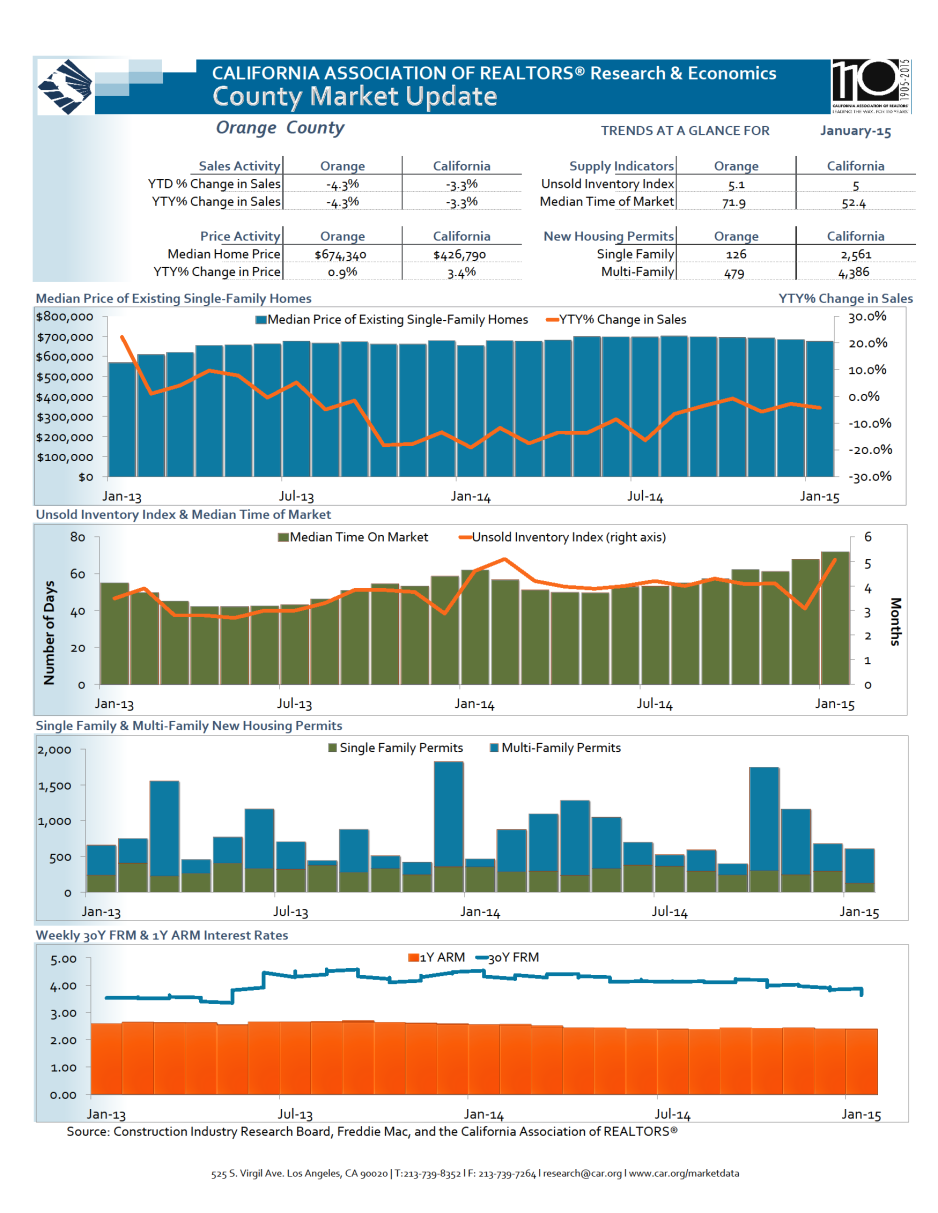Understanding the current market.
Much like the beginning of 2014, this year has started with a lot of uncertainty in the housing market. January sales dropped to the lowest annualized level since the housing collapse despite positive housing fundamentals and bustling economy. Disappointing January sales largely reflect noteworthy slowdown in sales in the Bay area, which despite having one of the best job markets in the country continues to struggle with very limited supply of inventory of homes for sale. Low supply has constrained sales for several years now and has certainly contributed to low activity in 2014 in general.
January sales in the Bay Area dropped almost 15 percent from the year before, which is double the drop seen in the Los Angeles metro area where sales decreased 7 percent. Inland Empire performed relatively better with only a 4 percent decrease in sales and also the strongest increase in pending activity in January over the year before, 11 percent. Based on the pending numbers, the Bay Area sales will remain soft in February while Southern California will improve slightly.
At the state level, median home prices appear to have decreased as well. Again, however, median home prices at the state level are affected by the sales mix. Since fewer homes were sold in the Bay Area, the most expensive market in the state, the sales mix was largely repressed by homes at lower price levels. Consequently, median prices were pulled down. But are home prices coming down? No. Home prices are still rising throughout the state though the increase has slowed down on an annual basis. While home prices were increasing rapidly in 2012 and 2013, often at double digit year-over-year rates, the increase in prices has slowed down in 2014.
California Association of Realtors show median prices have slowed to 3.4 percent annual increase in January. While again, median prices are affected by mix of sales, other price indices which measure price changes on a same home show prices growth at about 5-9 percent. Highest price growth does remain in the Bay area, while somewhat slower growth is reflected in the Southern California.
What can we expect going forward?
Well, most recent pending sales along with Market Pulse survey of Realtor members suggest that there are some positives on the horizon. Pending sales index for January showed a monthly increase of almost 27 percent from January, which is much larger than monthly increase of 16 percent between the two months observed in the last six years. National pending sales index showed similar numbers. Also, there has been a pickup in open house traffic when compared to last year. As for housing prices, the appreciation rates will stabilize. Existing listings have already had to adjust to slower price growth and now over 50 percent of transactions are closing below the asking price. The discount on asking prices varies but it has averaged about 11 percent. Taken all together, we are seeing a market that is more buyer-friendly and should lend itself to more market activity over next year.


Leave a Reply